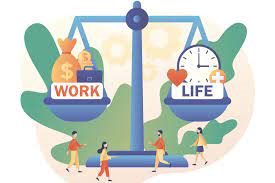In today’s fast-paced world, achieving a healthy work-life balance can feel like a constant juggling act. We’re bombarded with emails, deadlines, and to-do lists, leaving little time for rest, relaxation, and personal pursuits. This constant pressure can significantly impact our well-being, both physically and mentally.

The Importance of Employee Well-being
Employee well-being encompasses more than just physical health. It includes mental, emotional, and social well-being as well. When employees feel good, they’re more likely to be productive, engaged, and satisfied with their jobs. They’re also less likely to experience stress, burnout, and absenteeism.
The Benefits of Work-Life Balance
A healthy work-life balance allows employees to:
Reduce stress and improve mental health
Boost physical health and well-being
Increase productivity and creativity
Improve job satisfaction and engagement
Strengthen relationships and social connections
Prevent burnout and absenteeism
How Employers Can Promote Employee Well-being and Work-Life Balance
There are several things that employers can do to promote employee well-being and work-life balance, such as:
Offer flexible work arrangements such as remote work, compressed workweeks, or flextime.
Provide generous paid time off and encourage employees to take it.
Create a supportive and positive work environment that values employee well-being.
Provide employee assistance programs that offer discreet counseling and support services.
Promote healthy habits such as physical activity, healthy eating, and stress management.
Set clear expectations and boundaries to help employees manage their workload.
Discourage presenteeism and encourage employees to take breaks and disconnect after hours.

Tips for Maintaining a Healthy Work-Life Balance
Employees can also take steps to achieve a healthy work-life balance, such as:
Set boundaries between work and personal life.
Prioritize your tasks and learn to say no.
It is advisable to take regular breaks throughout the day to prevent burnout.
Disconnect from work after hours and avoid checking emails or work calls.
Get enough sleep and exercise regularly.
Spend time with loved ones and pursue your hobbies.
Seek help and support if you’re struggling to cope.
Conclusion
Employee well-being and work-life are essential for a happy, healthy, and productive workforce. By promoting both, employers can create a more positive and sustainable work environment for everyone.

